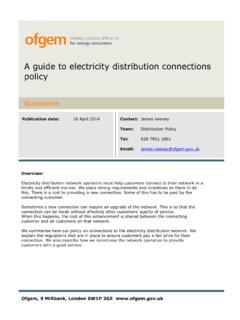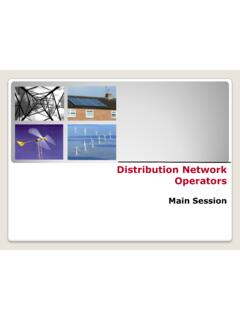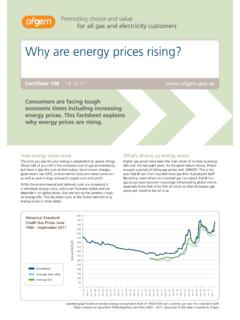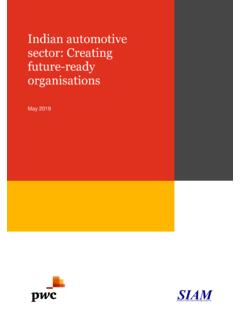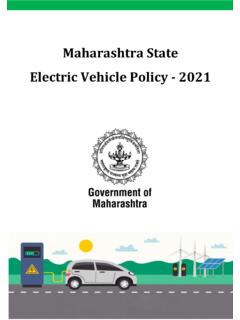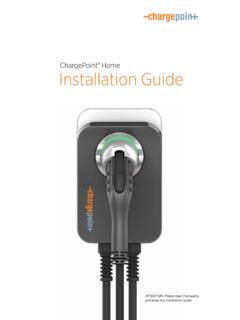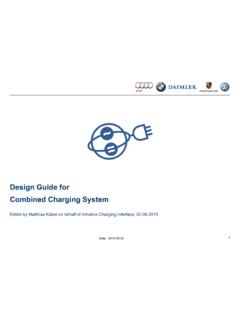Transcription of Enabling the transition to electric vehicles
1 Enabling the transition to electric vehicles : The regulator s priorities for a green, fair future #GreenFairFuture This document communicates our ambition supporting the transition to electric vehicles (EVs). It also sets out our priorities for supporting EV deployment and the integration of EVs into the electricity system. Enabling the transition to electric vehicles : the regulator s priorities for a green fair future Publication date: 4th September 2021 Contact: EV Policy Team Email: Crown copyright 2021 The text of this document may be reproduced (excluding logos) under and in accordance with the terms of the Open Government Licence. Without prejudice to the generality of the terms of the Open Government Licence the material that is reproduced must be acknowledged as Crown copyright and the document title of this document must be specified in that acknowledgement.
2 Any enquiries related to the text of this publication should be sent to Ofgem at: 10 South Colonnade, Canary Wharf, London, E14 4PU. Alternatively, please call Ofgem on 0207 901 7000. This publication is available at Any enquiries regarding the use and re-use of this information resource should be sent to: 2 Report Ofgem s ambition and priorities for electric vehicles Contents Contents .. 2 Foreword .. 3 1. Executive Summary .. 4 2. Introduction .. 8 Ofgem s role .. 10 Ofgem s priorities .. 11 3. Getting networks ready for EVs .. 13 Section summary .. 13 Networks Overview .. 13 Introduction .. 14 Priority Area 1: Ensure the network is prepared for EV adoption .. 14 Priority Area 2: Reducing barriers to network connections by ensuring efficient and timely process and proposals to reduce EV connection charges.
3 16 Actions .. 18 4. System Integration .. 20 Section summary .. 20 System Integration Overview .. 21 Introduction .. 21 Priority Area 3: Enabling rapid development and maximising the uptake of smart charging and V2X technology .. 23 Actions .. 28 5. Consumer participation and protection .. 29 Section summary .. 29 Consumer Overview .. 29 Introduction .. 29 Priority Area 4: Consumer Participation and Protections .. 30 Actions .. 33 6. Working with stakeholders .. 34 3 Report Ofgem s ambition and priorities for electric vehicles Foreword To meet the UK s 2050 climate change targets means decarbonising all parts of the economy. With the transport sector accounting for 27% of greenhouse gases emitted in 2019, the rapid take up of electric vehicles (EVs) will be vital if UK is to hit its climate change targets.
4 Ofgem will make sure that energy sector regulation supports the rapid transition to EVs, and does so at least cost to consumers. We are already accelerating investment in the energy networks to ensure they are prepared for the increased demand for electricity, and recently set out our proposals to reduce the costs of installing new chargepoints. We intend to go further, building a smart and flexible energy system that can utilise the huge number of EV batteries that are going to be plugged into our system to keep costs down for everyone. Consumers must be at the heart of this transition . For example, we will be encouraging products and services to be available which enable drivers to charge their cars where it is most convenient from them, for example on the go and at workplaces; when it s cheapest to do so; and which allow the sale of electricity back to the grid when it s most needed.
5 Our priority is ensuring that all consumers benefit from this transition to EVs. This document sets our priorities for making that happen. We look forward to ongoing work with Government, industry, and consumers to ensure we have the energy system we need to support the electric vehicle revolution. Jonathan Brearley Chief Executive, Office of Gas and Electricity Markets 4 Report Ofgem s ambition and priorities for electric vehicles 1. Executive Summary The rapid uptake of electric vehicles (EVs)1 will be the most significant change in our energy sector over the next 10 years. We may well see 14 million EVs on UK roads by 2030. By 2050, electric cars and vans are expected to need 65 100 TWh of electricity annually: an increase of 20 30% over today s This will require significant investment in the energy system.
6 But, with the right planning and regulatory measures, EVs can be an asset to the energy system, as well as to the environment. All consumers should be able to benefit from the transition , and our job is to help make this a reality. We believe that high numbers of EVs on the system could reduce total costs of energy for everyone, even non EV owners, particularly if is the norm that EVs charge in off-peak hours, using smart charging . EV owners are expected to benefit from cheaper running costs of EVs compared to petrol or diesel vehicles , but non-EV owners will also benefit. This is because EVs will enable a better utilisation of the electricity network and generation assets, thereby reducing unit costs. Ofgem has an important role to play in Enabling the widespread adoption of EVs and their lower-cost integration into the electricity system.
7 We have a range of regulatory tools at our disposal - from establishing market mechanisms to mandatory requirements. On EVs, we plan to adopt a balanced approach, establishing price incentives and Enabling market-based solutions to encourage smart charging , supported as needed by regulatory measures such as the government s plans to mandate that all new private EV chargepoints are capable of smart charging . As the transition to EVs happens, Ofgem will ensure both that the networks are prepared for increased EV adoption whilst avoiding over-investment, and that network connections are timely and cost-effective. Network companies will need to adapt to these challenges. They will need to ensure that they monitor their network to target strategic investment where capacity is needed; that the process for connecting EV infrastructure to the network is easier; and that costs to connect are fair.
8 Ofgem is proposing to reduce 1 There are already half a million BEV and PHEVs on UK roads, and to date this year (up to July) new car registrations have seen BEV and PHEV registrations overtaking full diesel car registrations: 2 The CCC s Sixth Carbon Budget: Sixth Carbon Budget - Climate Change Committee ( ). CCC pathways suggest that the total demand from electrification of all road transport (including motorcycles, buses, and HGVs) could account for around 15-20% of the total electricity demand in 2050 (excluding demand from electrolysis using surplus generation). 5 Report Ofgem s ambition and priorities for electric vehicles costs for developers to install new electric vehicle charging stations where reinforcement of the existing network is required.
9 When and how EV users charge their vehicles will be critical to the impact on the overall system. If EVs smart charge and provide flexibility to the grid, they will be a huge asset to the energy system. Without smart charging , by 2050 EVs could introduce significant additional peak demand. Models suggest that EVs could see peak demand rise by more than ~20GW (which is 35% of current peak demand). With smart charging , the impact to peak demand would be minimised (models suggest smart charging alone could avoid 5-15GW of demand).3 Smart charging should benefit EV owners, who can charge their vehicles when electricity prices are low for example overnight, or at times of high renewable electricity supply. vehicle batteries can play an active role in the energy system of the future.
10 vehicle -to-X (V2X) technologies allow to export electricity during periods of high demand and/or low electricity supply. V2X s potential goes beyond reducing peak demand, as it is capable of providing a temporary source of energy supply. By 2050, the capacity of V2X could significantly exceed By providing power to the grid or buildings, they have the potential to provide further benefits to the energy system, and to EV owners providing that flexibility, as they earn money or reduce their own energy consumption from exporting power. If appropriately integrated, these technologies can lower the overall generation capacity required on the system and also avoid additional network costs. V2X technologies are at an early stage, but Ofgem is keen to support the development of this market.
